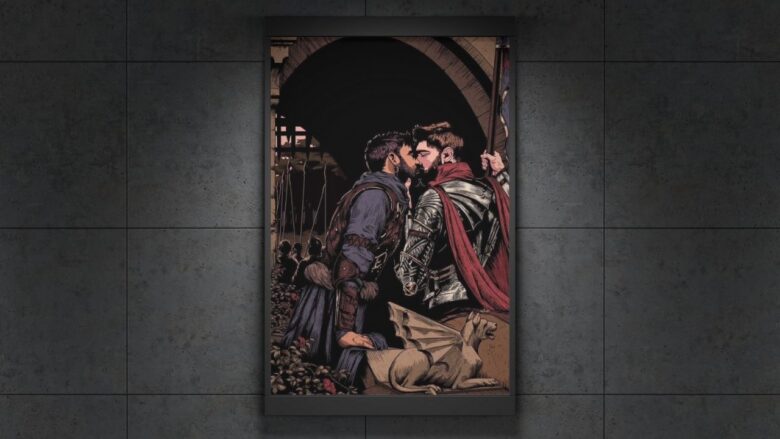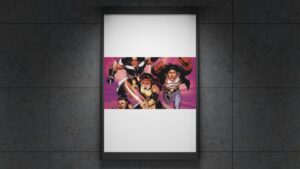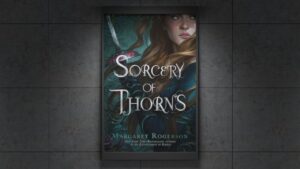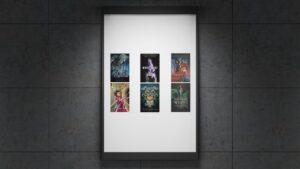Fantasy is a genre that has captivated readers for centuries, offering immersive worlds where magic, adventure, and myth intertwine. Its enduring appeal lies in the ability to transport us beyond the boundaries of reality into richly imagined settings where anything is possible. Among these worlds, those set in ancient or medieval times hold a special charm — blending historical elements with fantastical storytelling to create epic tales of heroism, politics, and magic.
In recent years, there has been a growing recognition of the importance of diverse representation within fantasy literature. For LGBTQIA+ readers, seeing characters that reflect their identities and experiences is vital not only for visibility but also for fostering empathy and understanding among all audiences. Historically, queer characters were often erased or sidelined in mainstream fantasy, but contemporary authors are challenging this by centering LGBTQIA+ voices and stories in their works.
Ancient and medieval settings present a unique opportunity to explore LGBTQIA+ narratives against a backdrop traditionally dominated by heteronormative perspectives. These worlds allow authors to reimagine history and myth with inclusivity, highlighting queer love, identity, and power within societies shaped by different cultural norms. This blending of old-world ambiance and fresh perspectives creates a rich space for storytelling that is both timeless and revolutionary.
In this article, you will find a carefully curated guide to some of the best LGBTQIA+ fantasy stories set in ancient or medieval worlds. We will explore standout books, recurring themes, and notable authors in this exciting niche. Whether you are a longtime fan or new to the genre, this guide aims to introduce you to compelling narratives that celebrate queer identities through the magic of fantasy.
Why LGBTQIA+ Representation Matters in Fantasy
For much of history, LGBTQIA+ identities have been marginalized, erased, or misrepresented in literature and society. This historical erasure has contributed to a lack of visibility and understanding, making it difficult for queer readers to find stories where they see themselves authentically reflected. In recent decades, there has been a powerful movement to reclaim queer identities and narratives, ensuring that diverse experiences are acknowledged and celebrated.
Fantasy as a genre offers a unique platform for this reclamation. Unlike contemporary or realistic fiction, fantasy is not bound by current social norms or historical facts. It can transcend the limitations of the real world, allowing authors to reimagine identity, gender, and sexuality in expansive, fluid ways. This freedom enables writers to explore the complexities of queer experience in worlds where magic, alternative cultures, and different societal structures offer fresh possibilities for representation.
Seeing LGBTQIA+ characters portrayed in rich, ancient or medieval-inspired worlds is especially impactful. These settings often evoke a sense of tradition, hierarchy, and rigid social roles, yet when queer narratives are woven into them, they challenge those very ideas. Representation in such contexts affirms that queer identities are timeless and universal, existing throughout all periods and cultures—even those that fantasy worlds echo. This not only enriches the storytelling but also provides readers with a deeper sense of inclusion and historical belonging.
In sum, LGBTQIA+ representation in fantasy is vital for creating a more inclusive literary landscape. It validates queer experiences, broadens the scope of imaginative worlds, and empowers readers to envision futures—and pasts—where all identities thrive.
Appeal of Ancient and Medieval Settings in Fantasy
Ancient and medieval worlds in fantasy literature are characterized by their richly detailed societies, often inspired by historical periods marked by kingdoms, empires, and feudal systems. These settings typically feature castles, sprawling forests, mythical creatures, and systems of magic or religion that shape the political and social landscapes. The blend of historical textures with fantastical elements creates immersive backdrops where epic quests, power struggles, and personal journeys unfold.
One of the most compelling aspects of these worlds is their rootedness in tradition and hierarchy. Social roles, gender expectations, and power dynamics are often rigidly defined, reflecting real-world histories. This can create a stark contrast when modern queer narratives are introduced into such settings. The clash between the entrenched norms of ancient or medieval worlds and contemporary understandings of gender and sexuality invites a powerful reexamination of identity, resistance, and acceptance.
Reimagining history with LGBTQIA+ inclusion presents both challenges and opportunities for authors. On one hand, writers must navigate historical prejudices and cultural frameworks that may have been hostile or dismissive toward queer identities. On the other hand, this process allows for creative reinterpretation—crafting worlds where queer love and identity are natural parts of the cultural fabric. This not only challenges traditional genre conventions but also enriches the fantasy landscape by adding depth, complexity, and authenticity to character experiences.
Ultimately, the appeal of ancient and medieval settings in LGBTQIA+ fantasy lies in their ability to bridge past and present. They invite readers to explore narratives where queer identities are woven seamlessly into epic tales of magic, power, and belonging—showing that these stories are as timeless as the worlds they inhabit.
Top LGBTQIA+ Fantasy Books Set in Ancient or Medieval Worlds
Exploring LGBTQIA+ fantasy stories set in ancient or medieval-inspired worlds reveals a wealth of narratives that combine rich worldbuilding with compelling queer representation. Below are some standout books that showcase this exciting intersection:
1. The Priory of the Orange Tree by Samantha Shannon
This standalone epic fantasy novel is set in a richly imagined medieval world filled with dragons, political intrigue, and magic. Central to the story is the relationship between Ead Duryan, a secret mage and protector, and Queen Sabran IX, whose reign is threatened by both internal and external forces. The novel features explicit queer representation, including lesbian relationships and non-binary characters, woven seamlessly into the narrative’s political and magical themes.
2. Gideon the Ninth by Tamsyn Muir
Set in a necromantic universe with gothic and medieval influences, this novel follows Gideon Nav, a sword-wielding cavalier, and her complex relationship with Harrowhark, a necromancer. Their dynamic, filled with tension, loyalty, and unspoken emotions, explores queer identity and intimacy in a setting that mixes ancient rituals with sci-fi elements. The book is praised for its dark humor, intricate plot, and representation of lesbian and bisexual characters.
3. The Tiger’s Daughter by K. Arsenault Rivera
This novel is a sweeping tale of two warrior women from rival kingdoms inspired by Asian medieval cultures. It follows their passionate and turbulent love story against the backdrop of war, honor, and magic. The book is celebrated for its rich worldbuilding, queer romance, and the deep emotional exploration of identity and duty.
4. The Bone Season by Samantha Shannon
While more dystopian than strictly medieval, this series blends fantasy elements with a hierarchical society that echoes feudal structures. The protagonist, Paige Mahoney, navigates a world of clairvoyance and oppression. LGBTQIA+ representation appears in multiple characters and relationships, contributing to a complex and inclusive narrative.
5. The Mirror Season by Anna-Marie McLemore
Set in a town with magical realism and folklore influences reminiscent of old-world mysticism, this novel follows two queer protagonists whose relationship unfolds amidst mystery and enchantment. It highlights themes of identity and belonging within a world that draws from fairy tale and medieval motifs.
6. The Raven Tower by Ann Leckie
This novel blends mythology and political fantasy in a medieval-style kingdom where gods walk among mortals. It features a non-binary main character navigating power struggles and divine machinations. The book is notable for its subtle but important queer representation and its fresh take on traditional fantasy tropes.
7. Swordspoint by Ellen Kushner
A classic in queer fantasy literature, Swordspoint is set in a renaissance-inspired city with a strong emphasis on politics, dueling, and intrigue. The novel features openly gay and bisexual characters in a complex story about power and desire. Kushner’s work helped pave the way for more explicit queer representation in fantasy settings that echo medieval and early modern periods.
These books demonstrate the variety and depth of LGBTQIA+ fantasy stories set in worlds inspired by ancient and medieval times. Each offers unique narratives where queer identities are integral to the plot and the characters’ journeys.
Themes and Tropes in LGBTQIA+ Ancient/Medieval Fantasy
LGBTQIA+ fantasy stories set in ancient or medieval-inspired worlds often explore a range of powerful themes that resonate deeply within the context of these settings. Understanding these recurring themes and tropes helps readers appreciate how queer narratives uniquely unfold in historical-esque fantasy.
Common Narrative Themes
- Forbidden Love: Many stories center on relationships that defy societal norms or legal restrictions typical of ancient or medieval worlds. These tales highlight the tension between personal desire and cultural expectations, creating emotionally charged conflicts that enrich character development.
- Identity and Self-Discovery: Characters frequently grapple with their sexual or gender identities amid worlds that may not accept or recognize them. This theme often involves internal and external journeys toward acceptance and empowerment.
- Magic and Power: Fantasy’s magical elements often parallel the characters’ exploration of identity, with magic serving as a metaphor for transformation, hidden strength, or societal marginalization. Power dynamics—whether political, magical, or personal—play a key role in shaping queer narratives in these worlds.
- Found Family: Given the often hostile societal environments, many queer characters form chosen families or alliances that provide support and belonging. This theme emphasizes community, loyalty, and resilience.
Popular Tropes
- Queer Royalty: Stories featuring LGBTQIA+ characters in positions of power—such as kings, queens, or heirs—challenge traditional leadership archetypes and explore the intersection of identity and governance.
- Warrior Lovers: The trope of warrior couples, often sharing both romantic and combative bonds, blends themes of loyalty, honor, and passion. These relationships frequently defy gender and sexual norms, highlighting strength and vulnerability.
- Secret Identities: Concealment of queer identity for survival or political advantage is a common trope, adding layers of intrigue and tension. The revelation of hidden truths often drives key plot points and character growth.
Unique Resonance in Historical-Esque Worlds
These themes and tropes take on distinctive significance in ancient and medieval settings because such worlds often mirror real historical periods with strict social hierarchies and rigid gender roles. Queer characters navigating these worlds confront not only external threats but also the weight of tradition and legacy. This tension heightens the stakes of personal freedom and love, making their stories poignant and transformative.
Moreover, the incorporation of magic and myth allows authors to reimagine or subvert historical prejudices, crafting inclusive narratives where LGBTQIA+ identities are integral to the culture and mythology of the fantasy world. This blend of old-world atmosphere and progressive representation enriches the genre, offering readers stories that are both familiar and groundbreaking.
Authors to Watch
The niche of LGBTQIA+ fantasy set in ancient or medieval-inspired worlds is growing rapidly, with many authors bringing fresh perspectives and rich storytelling to the genre. Here are some influential and emerging writers whose works stand out for their compelling representation and unique voices:
Samantha Shannon
Known for her intricate worldbuilding and epic scope, Samantha Shannon seamlessly weaves LGBTQIA+ characters into grand, medieval-inspired fantasy settings. Her writing combines political intrigue, magical systems, and complex queer relationships, making her stories both immersive and inclusive. The Priory of the Orange Tree is a prime example of her ability to center queer identities within a broad, diverse cast.
Tamsyn Muir
Tamsyn Muir’s Gideon the Ninth series is celebrated for its dark humor, gothic atmosphere, and complex queer relationships. Her style blends sharp dialogue with rich characterization, often challenging traditional fantasy norms. Muir’s representation of bisexual and lesbian characters is nuanced and integral to the plot, appealing to readers who enjoy both mystery and fantasy.
K. Arsenault Rivera
Rivera’s lyrical prose and focus on queer love stories in richly imagined worlds make her a standout author in this space. Their work, including The Tiger’s Daughter, highlights intense emotional connections and culturally diverse fantasy settings inspired by historical Asia. Rivera approaches queer representation with depth and authenticity, emphasizing the intersections of identity, duty, and desire.
Anna-Marie McLemore
With a poetic and magical realism style, McLemore crafts stories that blend folklore, myth, and LGBTQIA+ themes. Their novels often explore identity, transformation, and belonging in settings that evoke historical mysticism, providing a unique take on queer fantasy grounded in cultural tradition.
Ann Leckie
Leckie is known for her thoughtful exploration of gender and identity within complex fantasy and science fiction narratives. The Raven Tower features non-binary and queer characters in a medieval-style world, combining political drama with mythological elements. Her writing is praised for subtlety and depth in representation.
Ellen Kushner
A pioneering voice in queer fantasy, Kushner’s Swordspoint is a classic that helped shape the genre. Her work is characterized by intricate plotting, sharp dialogue, and candid exploration of queer relationships in renaissance-like settings. Kushner’s influence continues to inspire new generations of fantasy authors.
These authors exemplify the diverse approaches to LGBTQIA+ representation in ancient and medieval fantasy. Their works offer a blend of inclusive storytelling, cultural richness, and innovative worldbuilding, making them essential voices for readers seeking meaningful and immersive queer fantasy.
How to Find More LGBTQIA+ Fantasy Stories Set in Ancient or Medieval Worlds
Discovering new LGBTQIA+ fantasy books set in ancient or medieval-inspired worlds can be an exciting journey. Here are practical tips and resources to help you explore this rich and growing niche:
Explore Online Communities and Book Clubs
Online platforms such as Goodreads, Reddit (notably subreddits like r/Fantasy and r/QueerFantasy), and specialized Facebook groups offer vibrant spaces where readers share recommendations and discuss LGBTQIA+ fantasy literature. Joining these communities allows you to engage with fellow fans, receive personalized suggestions, and stay updated on new releases.
Additionally, many book clubs focus specifically on queer fantasy or historical fantasy genres. Participating in these groups—whether virtual or local—provides opportunities to connect with authors, attend discussions, and deepen your appreciation of the genre.
Utilize Recommended Reading Lists and Databases
Several websites and organizations curate extensive lists of LGBTQIA+ fantasy books. For example, the #OwnVoices and Queer Sci-Fi & Fantasy lists highlight stories by queer authors. The website The Rainbow Book List and platforms like Book Riot often publish themed recommendations that include historical and fantasy settings.
Library catalogs and digital bookstores frequently offer filters or curated collections under tags like “LGBTQIA+ Fantasy” or “Medieval Fantasy.” Using these resources can streamline your search and introduce you to titles that may not be widely known.
Use Effective Keywords and Tags in Bookstores and Libraries
When searching in physical or online bookstores and libraries, try combining keywords to narrow down your options. Phrases such as “queer fantasy,” “LGBTQIA+ medieval fantasy,” “ancient world queer fiction,” or “historical fantasy LGBTQ” can help locate relevant books.
Additionally, ask librarians or booksellers for recommendations. Many are knowledgeable about genre classifications and can guide you to hidden gems that fit your interests.
By leveraging these strategies and resources, you can continuously expand your reading list with diverse and immersive LGBTQIA+ fantasy stories set in captivating ancient and medieval worlds.
Conclusion
Representation in literature matters deeply, especially within the expansive realm of fantasy where imagination shapes our understanding of identity and belonging. LGBTQIA+ fantasy stories set in ancient and medieval-inspired worlds not only enrich the genre with diverse voices but also challenge traditional narratives that have long excluded queer experiences. By centering LGBTQIA+ characters in these historical-esque settings, authors reclaim and reimagine history, culture, and myth through inclusive and empowering storytelling.
This diversity in storytelling broadens the horizons for readers, offering narratives that validate and celebrate a wide spectrum of identities. Whether through themes of forbidden love, magical transformation, or found family, these stories resonate with universal truths and provide vital visibility. As the genre continues to grow, embracing and seeking out such narratives contributes to a richer, more inclusive literary landscape where all readers can find stories that reflect their realities and dreams.




